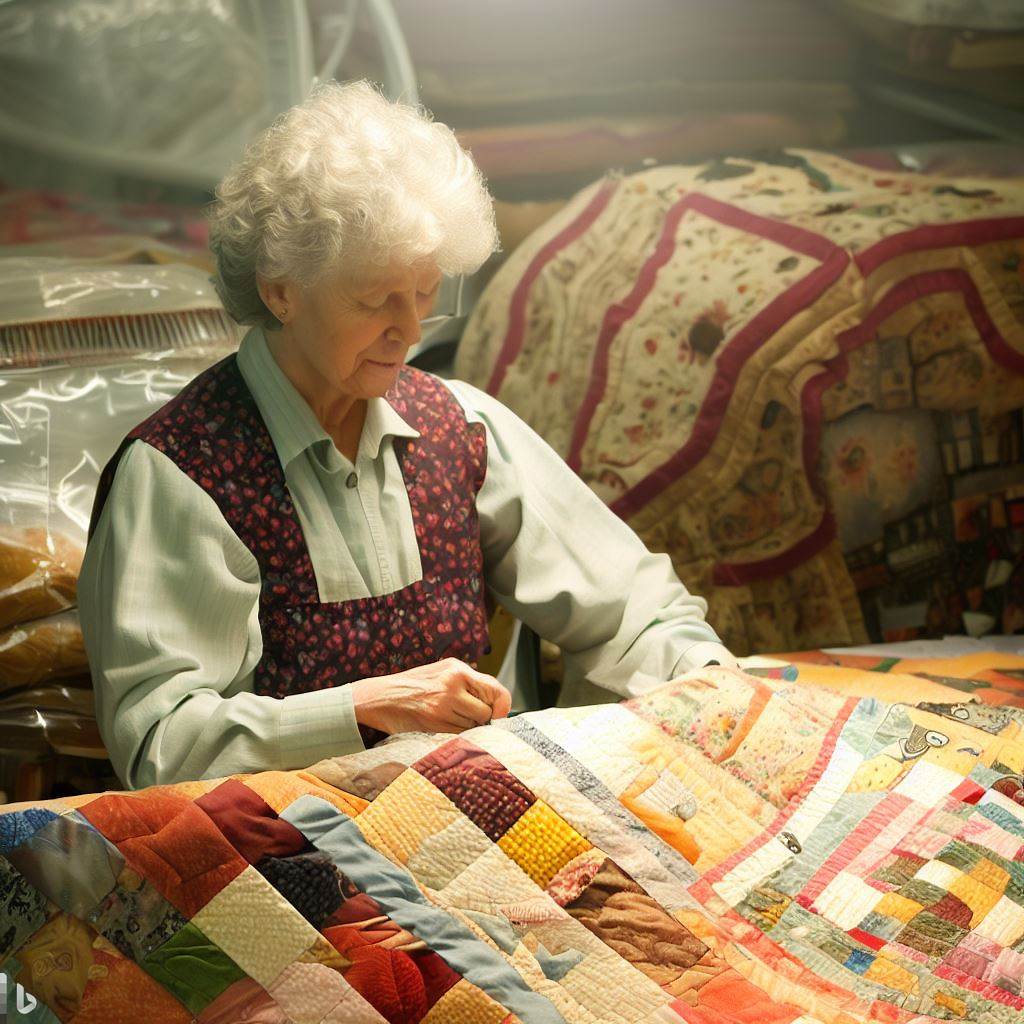Quilting Preservation: Caring for Antique and Vintage Quilts
Antique and vintage quilts represent precious artifacts of material culture. Beyond beauty, their fabrics, patterns, and stitches narrate stories of communities now passed. As stewards of this heritage, quilt owners bear responsibility to slow deterioration through proper storage, handling, and conservation. Understanding causes of damage like light, humidity, pests, and pollution allows salvaging quilts for generations to appreciate. With care and respect, we preserve these fragile threads connecting past lives to the present.
Recognizing Signs of Quilt Age and Wear
Examining construction, fabric, style, and condition offers clues about a quilt’s age and needs. These insights guide care.
Fabric Content and Dyes
Natural fibers like cotton and wool with natural dye pigments point to origins before 1930 when synthetics arose. Older textiles are more delicate.
Pattern Style
Patterns help date quilts. Floral sprigs suggest 1840s. Pictorial scenes reflect 1890s. Strong graphics indicate early 1900s. Style indicates era.
Wear and Discoloration
Thin, fraying fabric and faded colors signify age. Quilt tops often wear first. Handling accelerates wear so needs gentle care.
Previous Repairs
Signs of patching, stitch reinforcing, and remnant stitching suggest a well-loved quilt needing vigilant care. Repairs reveal its past use.
Provenance
Knowing a quilt’s origins and history from family accounts or documentation supports cherishing it as an artifact if ancestry is traceable. Legacy fuels preservation.
Protecting Quilts from Light and Climate Damage
Light and climate extremes deteriorate antique quilts over time. Guarding against these threats preserves integrity.
Sheer UV Protectant Covers
Quilts on display require sheer fabric sleeves filtering out ultraviolet light to prevent sun damage. Rotating quilts curbs light exposure further.
Climate Controlled Spaces
Storing quilts in temperature and humidity controlled rooms with levels kept at 60-72°F and 40-50% RH avoids fabric damage from heat, dampness, or dryness.
Dark, Well-Ventilated Spaces
Quilts kept folded in drawers or acid-free boxes reside best in dark, dry spaces with ample ventilation like closet shelves to prevent mold or mildew.
Limited Light Exposure
Whether exhibited or in storage, antique quilts need minimal light. Fluorescent bulbs also require UV sleeves. Curbing light preserves dyes.
Climate Monitoring Devices
Humidity, light, and temperature meters inside quilt storage spaces prevent damaging fluctuations. Monitors alert owners to adjust conditions.
Keeping Quilts Clear of Pests and Pollutants
Insects, rodents, and environmental toxins pose covert threats to vintage quilt integrity requiring vigilance.
Deterring Silverfish and Carpet Beetles
Silverfish and carpet beetles attracted to old fabrics get controlled by keeping humidity below 50%, eliminating food spills, and using cedar chips near quilts.
Monitoring for Signs of Rodents
Mice and rats drawn to quilts’ materials may leave droppings, gnaw marks, or nesting debris. Traps or low-toxicity repellents protect precious textiles.
Using Protective Containers
Acid-free boxes and tissue paper create physical barriers deterring pests. Clear sealable bins allow monitoring quilts easily for any concerns.
Cleaning Spaces and Fabrics
Vacuuming and gently surface cleaning quilts frequently curbs fabric pests by removing food oils they seek. Fresh fabrics resist bugs.
Avoiding Pollutants
Indoor and outdoor pollutants like car exhaust or tobacco smoke introduce acidity and stain fabrics. Keeping quilts away from these threats maintains integrity.
Safe Handling and Display
Proper techniques for managing quilts day-to-day prevent additional wear and physical stresses. Gentleness preserves.
Using Two Hands
Always support the entire span when moving quilts. Never pick up sections only. Distribute weight evenly using two hands to avoid tearing seams.
Folding Properly
Quilts get folded selvage to selvage edge gently to distribute weight across the entire width when stored. Refold in the same creases.
Support While Displaying
Hanging quilts requires wide sleeves distributing weight evenly across rods. Laid quilts need cushioning to prevent creasing delicate fabrics. Cover with plexiglass.
Safe Cleaning
Only specialists should wet clean antique quilts using purified water. Owners can vacuum gently through screens. Stain removal requires extreme care.
Protective White Gloves
Cotton gloves prevent skin oils and acids from transferring to fabric when handling. Gloves preserve quilt integrity and keep hands clean.
Preserving Our Quilted Heritage
Like timeworn diary pages, antique quilts reveal intimate hopes, struggles, values, and realities of those long past still needing to be heard. The patient stitches harboring their whispered stories await our care to be discovered and understood. By actively guarding fragile threads from harm, we sustain conduits to bygone souls who still have wisdom to share if we know how to listen.
